Home > Articles > The Archives > Who In The World Are The Bluegrass Cardinals?
Who In The World Are The Bluegrass Cardinals?
Reprinted from Bluegrass Unlimited Magazine
May 1976, Volume 10, Number 11
As I sat in my car across the street from the Fifth String on North High Street in Columbus, Ohio, it occurred to me that bluegrass had come a long way there in the years since I’d left town. In the early sixties you would have gone south of the University ten or fifteen blocks to where the street was lined with gin mills and beer joints, every third of which boasted some kind of country music or bluegrass. In fact, a couple of those places had the best picking I’ve heard anywhere – before or since. But 1976 finds the action closer to the campus and in the opposite direction – north, where there are neighborhood bars, restaurants and an air of semi-respectability.
What to do? I knew I could find some old friends playing at a couple of places if I wanted to go hunting; but I was already here and, although the Fifth String looked collegiate, it was nonetheless inviting. So I got out of the car, crossed over and went in; after all, I could always leave if it turned out wrong.
The band must have just begun for, as I found a stool at the bar and placed my order, the ritual introduction was just being concluded by the MC’ing bass player. He’s been listening to Mitch Jayne I thought as I sipped a cold one and settled down to listen.
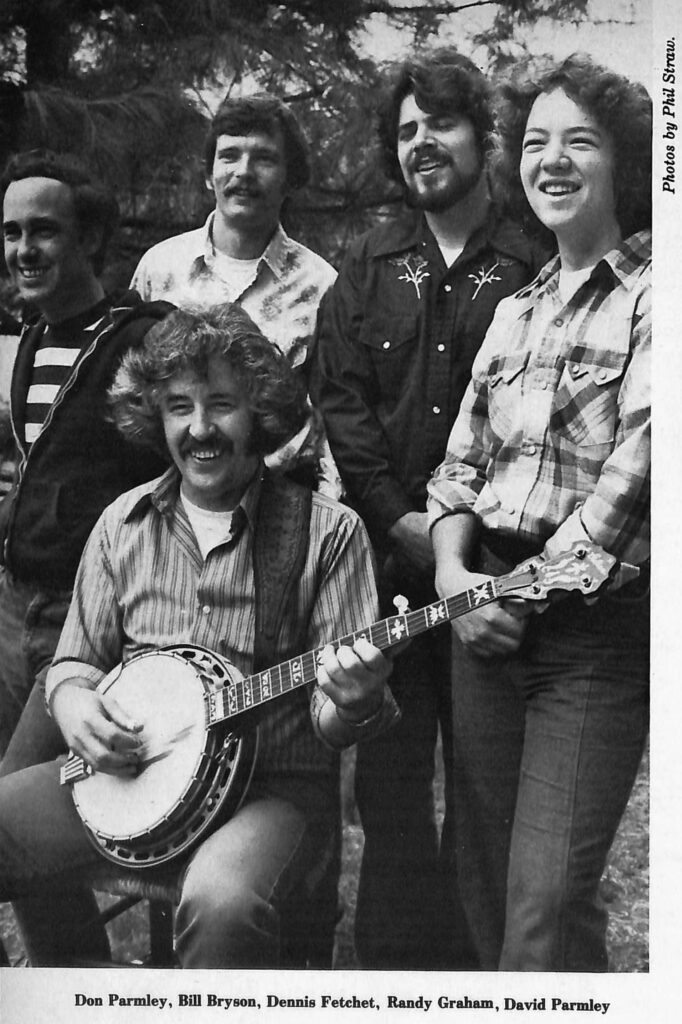
But then a funny thing happened. Funny because it was so completely unexpected; they were playing hard bluegrass – old Red Allen songs, Bill Monroe tunes, Flatt and Scruggs standards, fiddle tunes and a lot of good sounding things that I didn’t recognize. Wait a minute, this wasn’t any run-of-the-mill “Hey, let’s get together and form a bluegrass band ‘cause banjos are keen and I’ve had six lessons” type group. These people knew what’s happening, they knew the whys and wherefores of bluegrass past, bluegrass present and even bluegrass yet to come.
I listened for the rest of the set and when they took a well-earned break I suppressed my usual tendency toward anonymity and ventured to introduce myself and ask them about their music and themselves.
“Well, Don Parmley is a name I know, but who in the world are the Bluegrass Cardinals?” I continued after formalities had been completed.
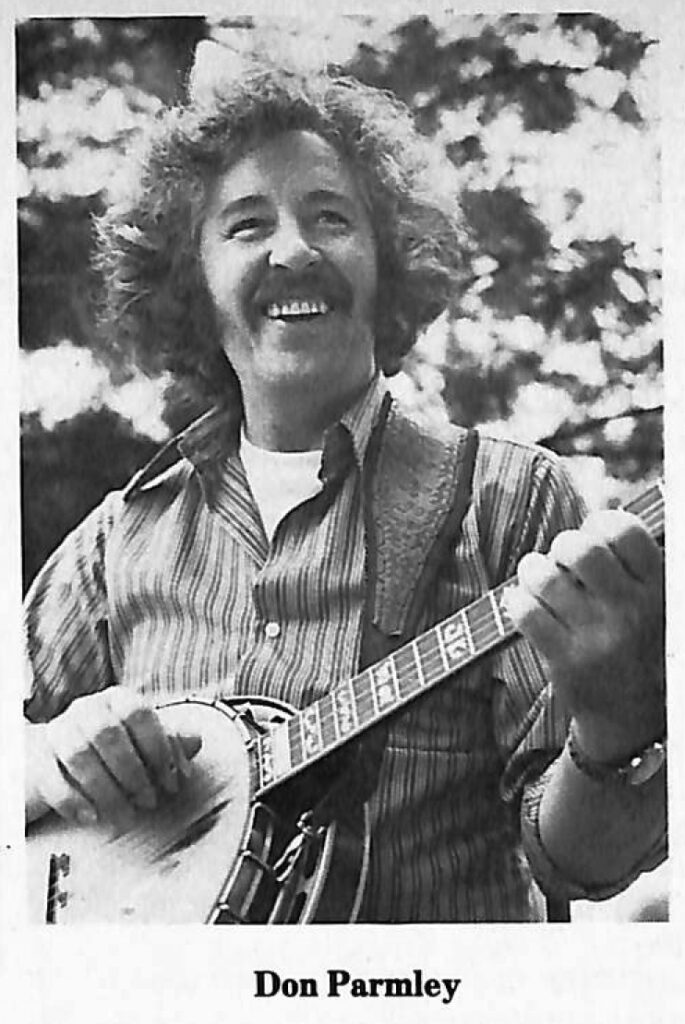
“That’s just the problem. We’re probably the only regularly working straight bluegrass band in the L.A. area but no one east of Death Valley knows anything about us.”
Banjo picker Parmley and mandolinist Randy Graham along with Don’s son David have been working together for around nine years in various groups but with the Cardinals they felt things were coming together and it was time to make a move for some national recognition.
“I just got on the phone and started calling places. We had a few leads, of course, but gradually it all began to take shape and so here we are,” said Randy, who helps keep track of the bookings.
Where they were at that point was the Columbus, Ohio, installment of a whirlwind tour of the East which includes stops in D.C., New Jersey, New York and Pennsylvania before they headed west again.
“We finished up in Bryn Mawr, Pennsylvania, on April the eighteenth and have to be in Tucson, Arizona on the twenty-first,” Don frowned. Tempered by his ten years experience with Continental Trailways, the thought of piloting the band’s blue and white Flexible Coach on that leg of the tour wasn’t cheerful.
In response to the question, “How long have you been in California?” Don replied, “Since about fifty-six. I left Monticello, Kentucky in 1956 and came to California.”
“And before that?”
“I played a lot around home, there, with different people at different times. Hylo Brown came through Monticello one time with only a mandolin player and he wanted me to go pick with him. So I took off and we played some shows. We wound up in Wheeling at the Jamboree there, all of us living in this hotel. There was us and the Osbornes and Jim and Jesse and some others, all in that one hotel. Hylo had a pretty good record going at that time – ‘Lovesick And Sorrow’ – but it didn’t seem like we were getting anywhere. We went over to Springfield, Ohio, where the mandolin player was from. His dad or brothers had this plastering business and quick as we got to Springfield he went to plastering to make some money. They wanted me to try it, so I did – for two days, then I headed out for home. I wanted to pick – not hang plaster!”
Shortly after that Don headed west to an off and on musical career that included stints with the Golden State Boys, The Hillmen and as studio banjoist for the Beverly Hillbillies television program. He also appeared with Mac Wiseman on one of Mac’s West ‘Coast tours and briefly with Earl Taylor when he was in California in the late sixties.
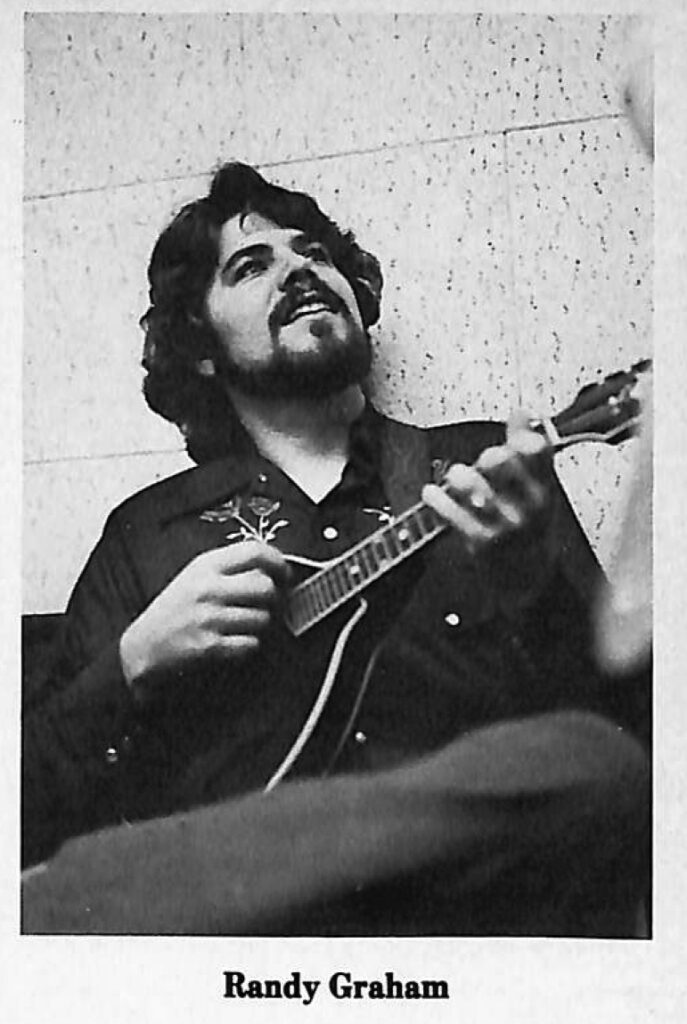
Mandolin picker, tenor singer Randy Graham is a native Californian, unlike most of the other band members. He is one of the newer breed of bluegrass musicians who, in spite of being city born and bred, was attracted to the music in direct opposition to the popular trends of the day. His fantastic tenor voice and skillful musicianship contribute considerably to the sound of the Bluegrass Cardinals. His professional career covers a period of fifteen years and includes some time with the Country Gazette. When questioned about influences he cited a variety of factors including the work of people like the Country Boys – Clarence, Eric and Roland White – fiddler Scott Stoneman, and particularly the mandolin playing of Nate Bray.
“His playing was just so neat. He’d take an ordinary run or phrase and maybe sharp one note or make some slight change in sequence or timing that would make all the difference in the world.”
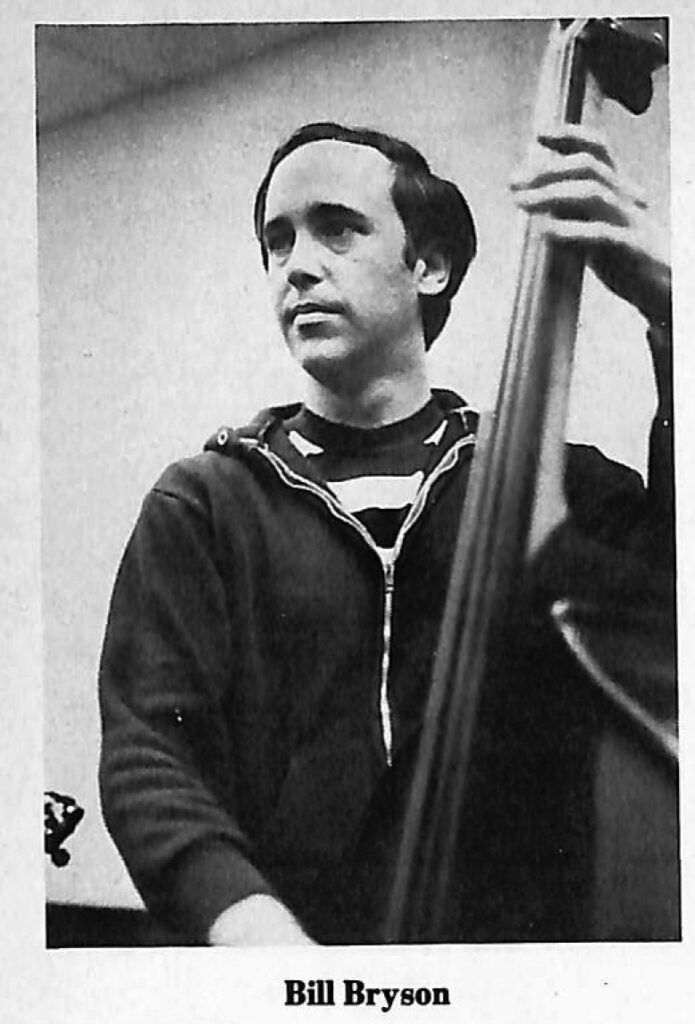
“Neat” in this case did not carry any slang meaning – rather it was classic usage of the word to impart a feeling of precise, well ordered, logical mandolin playing. Everyone nodded in agreement; we all knew what he meant. At any performance of the Bluegrass Cardinals the smiling face of Bill Bryson, bassist and MC, is what you’ll find up front between songs. Although Massachusetts is his home state his family moved to California when he was young and he comes to the band with a variety of experiences in his background. In addition to having a twice-weekly bluegrass program on radio in Los Angeles he reviews bluegrass recordings for the J & F Record Sales newsletters, writes some of the group’s original material and at one time taught creative writing. Commenting on influences, tastes and preferences Bill said, “We are really basically a vocal band. Bluegrass singing and harmony structures interest us a lot more than hot picking but in here (The Fifth String) we’ve been doing almost entirely a request show – instrumentals, familiar tunes, you know. What I really like, though, is the trio that the Osborne Brothers had with Red Allen. It was so tight; so perfect. But most audiences don’t have the patience or enough knowledge to appreciate a well-constructed trio like that or a lot of original material so we try to balance things.”
During the course of the conversation we found we shared a number of prejudices, likes, dislikes and concerns. Bill was worried, as am I, about the tendency of a lot of young musicians to bypass the roots of the music, becoming super technicians but having no feelings of where it all comes from or why one way of playing works in bluegrass and some other doesn’t.
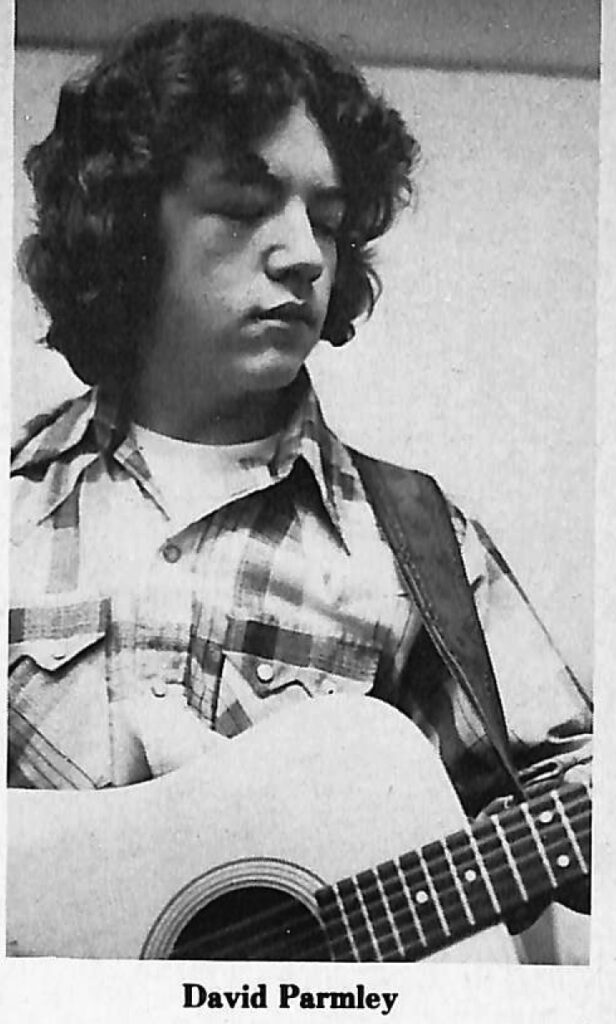
David Parmley is one youthful picker who doesn’t have that particular void in his background, having grown up in a household where both musical and cultural heritages were intact and thriving.
“He used to stand on a chair and sing high tenor to Randy’s high lead when he was little,” Don recalled. “But his voice started changing a year or two ago and we had to rework the singing. He’s about to get his power back now, though.” Strong lead singing and rhythm guitar playing are what you will notice first about David but his Clarence White influenced lead guitar licks and runs are well thought-out and there is a subtlety about his playing that belies his seventeen years.
Dennis Fetchet on fiddle is the newest member, coming into the band in October of 1975 with credits that include first-place fiddling at Hugo, Oklahoma, in 1974.
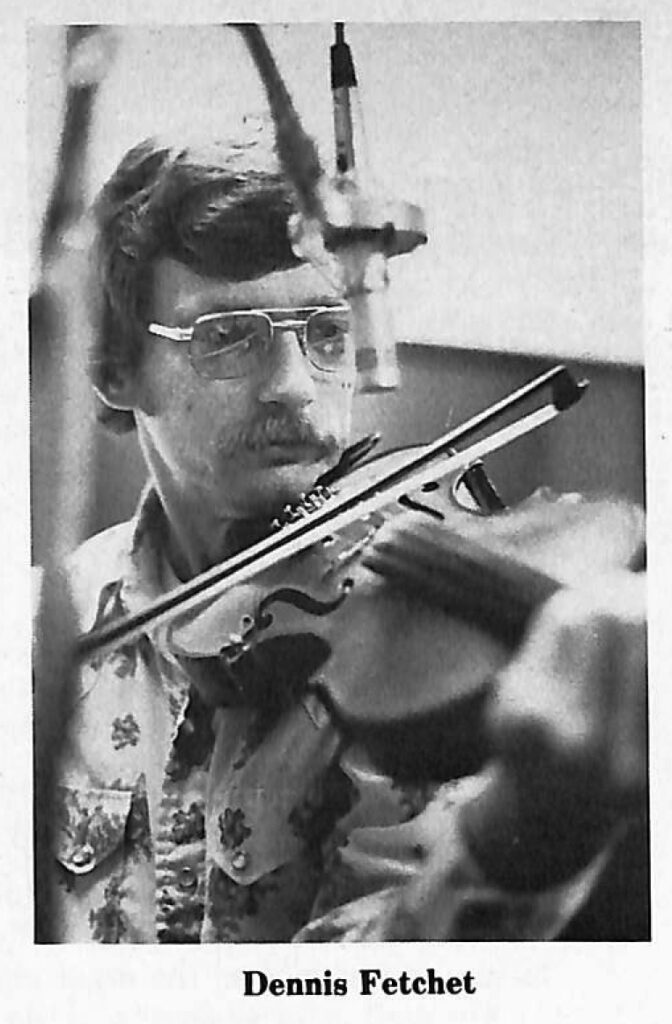
“The Dillards,” was his response when I asked him how he happened to get interested in bluegrass. Originally a mandolin player, he switched to fiddle six years ago after coming under the spell of Kenny Baker. It’s easy to pick Dennis out on stage; first of all, he’s the one with the fiddle, but more noticeable almost is the fact that he moves only his bow arm and the fingers on his left hand when he plays. There are no foot pats, no nose twitches or facial contortions and none of the movements like Vernon Derrick or Mac McGaha. He’s practically a fiddling statue in contrast to the other Cardinals who move in and out for breaks and singing. He is, in a sense, utilized as a foil for the others much in the way Rodney Dillard’s dumb act was used by Mitch Jayne. But it’s the fiddling that counts and on that score he more than holds his own.
Individually and as a unit the Bluegrass Cardinals are certainly an impressive band, deserving of high praise for both their instrumental and vocal accomplishments. But that isn’t the whole picture. Less obvious, perhaps, but certainly just as important is their tremendous sense of cohesion. They agree about how the band should be balanced and what material they ought to do and, although their style is basically straight, they are unusually appreciative and/or tolerant of other forms of bluegrass and are not afraid of tasteful experimentation themselves.
I think it was Randy who put it something like this, “It doesn’t really matter what other pickers do or how far out they go as long as it’s right for them. We know what’s right for us and that’s the way we try to play.”
It is really encouraging that they share a common sense of direction based on love of and respect for bluegrass and its roots and have the desire to create and progress within the scope of tradition.
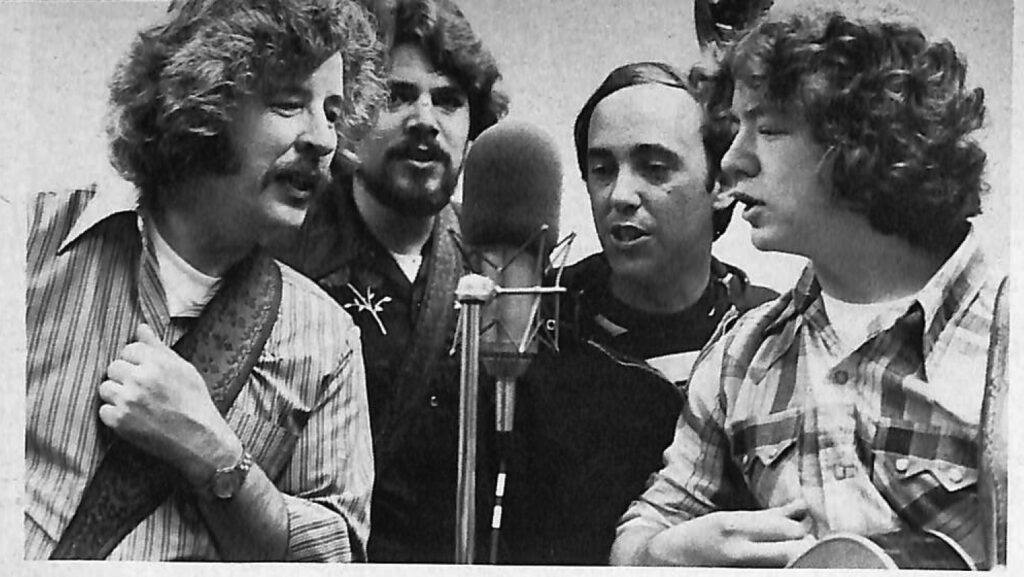
One final aspect of their show that deserves mentioning is just that – the show. “We feel very strongly about showmanship and developing a rapport with the audience. We sell our music by being friendly and by having something for them to look at and listen to between numbers.” Bill, as MC, is especially conscious of his role as a bridge between musicians and listeners. “Showmanship is why Curly Ray Cline can go over better than a performer who is more of a musician but has less stage presence – he’s always out there selling his music and that’s what you have to do otherwise the best music in the world produces only blank faces.”
With their new album on the Briar label and the Eastern tour to introduce them to new areas, the Bluegrass Cardinals hope to make a good enough impression to be invited back on a regular basis and to expand into Eastern and Mid-western festivals as the season approaches. For my money they’d be a tremendous addition to anyone’s program.
Share this article
1 Comment
Leave a Comment Cancel Reply
This site uses Akismet to reduce spam. Learn how your comment data is processed.
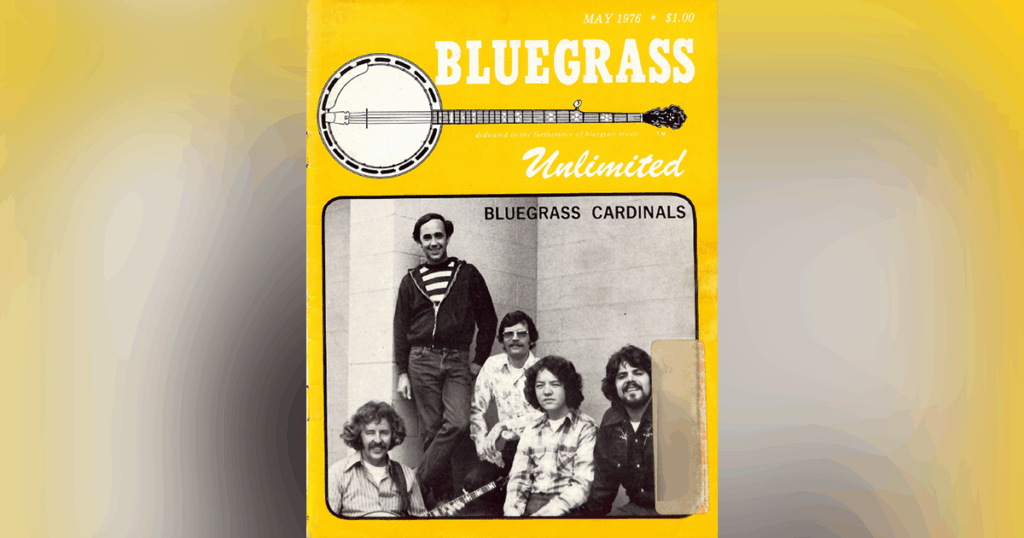
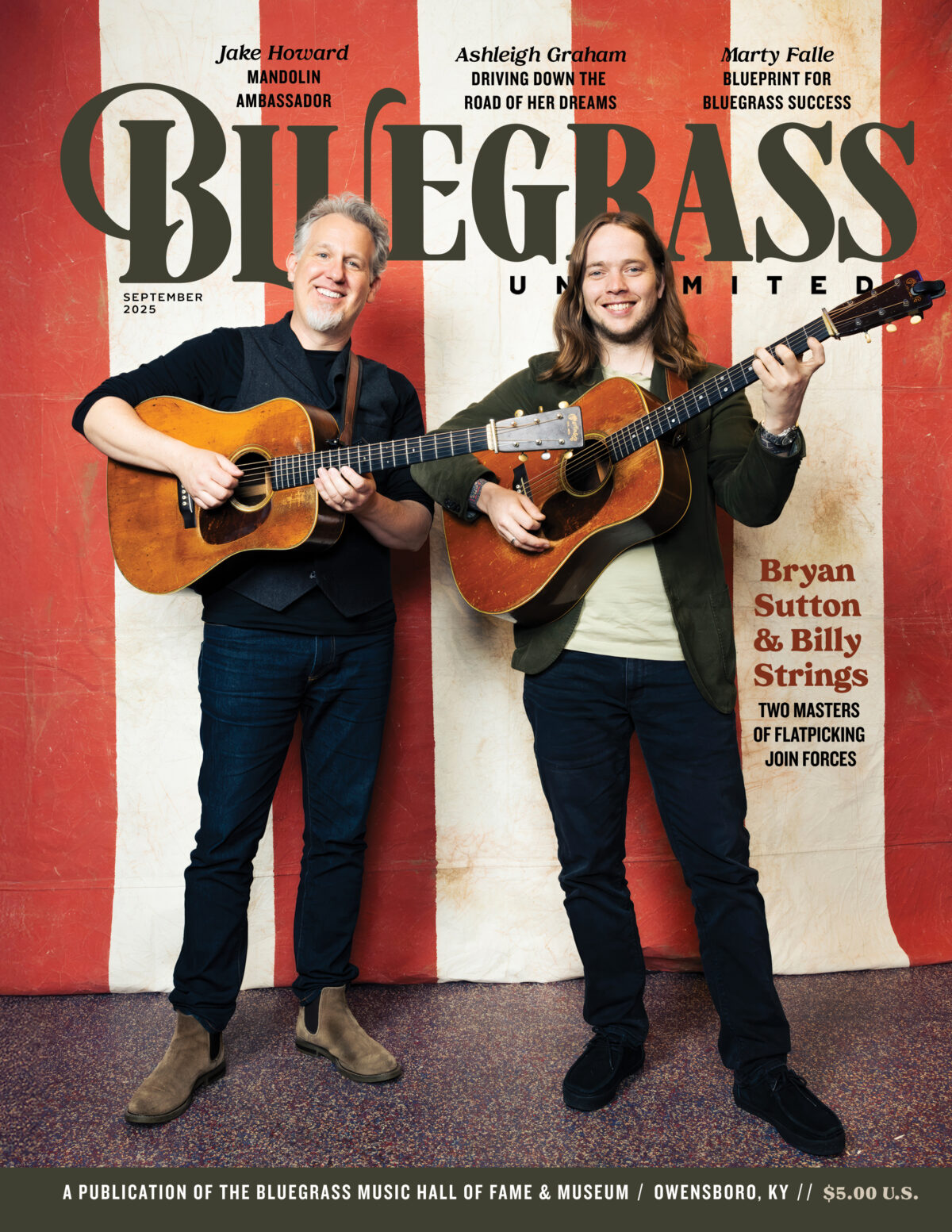
It’s so nice to see this article re-surface! My friends Dennis Fetchet and the late Bill Bryson count as brilliant musicians and kind, funny and very nice people. The other Cardinals I never met, but those I know who played with the guys have nothing but good things to say about them. The Bluegrass Cardinals are an all-time favorite band of mine.